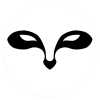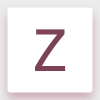Search the Community
Showing results for tags 'feature request'.
-
I'd like to see an additional Gradient Type added to the option list: Square I find it very useful. Easier than using two linear gradients to get a simple star effect. Here is a screen shot from Corel Draw Thanks for your consideration. Love Affinity Photo on my PC!
-
I mostly work on UI design for web and mobile apps. I often create many screens of content that utilize common elements like buttons. I would love if I could have my buttons resize automatically when I type a different label. This feature is currently available in Sketch via a 3rd party plugin: https://github.com/kenmoore/Sketch-Relabel-Button Constraints are wonderful, but don't go quite far enough in situations like this. Perhaps it would be nice to have a more complex system to define padding rules around elements, but that may be over-engineering the solution when all I typically want is for buttons (or other components with nested text, such as tabs, badges, etc) to resize when labels are changed. I also noticed an up-and-coming app, Subform, is working on this feature and it looks pretty fantastic. See "figure 9" on this page: https://www.subformapp.com/#content Thanks!
-
There is an .eps over at 123rf.com I purchased that I contacted their tech support over. I don't have Adobe Illustrator, but they informed me it opened fine for them. Here is their response to my inquiry: "Hi Bill, Greetings from 123RF.com. Following your conversation on the live chat in regard to the image 69226289 EPS. We have checked and confirmed this with our Creative team, there are no issues opening the file in Adobe Illustrator. The EPS file contains gradient and transparency which may be causing compatibility issues in Affinity Designer. Therefore, it is highly recommended to open EPS file using Adobe Illustrator. Hope this helps." As a huge proponent of AD, I am forwarding this to you so that you're aware of it. If you need the file for testing purposes I can email it. The file opens in grouped images instead of vectors, so nothing resizes. Thanks for your assistance!
-
It would be great to occasionally do some inpainting or blemish removal of an image I have in Designer. Yes I do know that I have a full set of tools in Photo, but sometimes I just need to make a slight correction and it doesn't warrant this round trip.
- 1 reply
-
- affinity designer
- brushes
-
(and 1 more)
Tagged with:
-
I was wondering if there was any plans on adding a 3d viewport so us modelers can paint our mesh with your software also are there any plans for an after effects style program in the future?
-
Would like to have a vertical panorama capability where you can stitch images vertically as easily as you currently can horizontally. This would aid in architectural photography and creative art applications. Current panorama tool will not allow this or if it will I don't know how to apply it where the result is anywhere near satisfactory. Currently it warps the images into a distorted mess.
-
Hello, I've been poking around the internet some after seeing an ad about this app that caught my eye while browsing youtube videos. This application seems like the perfect blend of just about everything I need all in one, subscription-free package, and It definitely looks impressive. I've just got one niche little feature request that I'd like to see at some point in the future, if possible: Can you add the ability to play-back and save the history as a video/gif file? I love being able to visually see progress - especially when I can see each step along the way to further enhance/review my understanding of what I can do and how I can do it. Even though I'm looking to download it as just an app for now until I get into super professional stuff (if ever), I still think some desktop users would appreciate such a feature. The only way to do something of the sort is use a sort of screen-recording software, which can quickly eat away at available storage space with all the down-time that may exist without editing it manually.In my head, it sounds simple, for the history slider is already there... but the programmer side of me says anything can be difficult when you least expect it. :P Thank you for your consideration! I'll get to buying and using the app soon! :D
-
The current Gradient Map feature is quite basic like the one in Photoshop, but in many ways, it could be a much more useful tool with the following additions: HSL Mode: Instead of going based only on Luminance, this would use the input hue or saturation as the lookup index. In combination with HSL blend modes, this would allow for some fantastic workflows like basically warping the color wheel to taste, similar to the "HSL Wheels" feature in Magic Bullet Colorista (Note: don't be fooled by the name of the feature, this is NOT referring to the three-way color corrector). Just use a gradient of the HSL spectrum and drag or re-define stops, set the result to "Hue" blend mode, and you have an extremely powerful color correction tool that gives you results that would be difficult to achieve in any other way. Circular Editor Option: Like the Colorama filter built-into in After Effects, this makes it easy to work on maps that are supposed to start and end with the same color. In combination with an input for a number of revolutions (cycles) to use, this would also make it easy to create gradient effects where a few stops are repeated multiple times across the spectrum (like, say, alternating black-white-black-white). This would also massively improve usability in conjunction with the HSL mode option suggested above. Access to swatches: This would make it easy to re-use gradients by defining them or recalling them from swatches as an alternative to using Adjustment Presets. Interpolation control: Sometimes the transition from one color to the next needs fine-tuning – this is something that Affinity's gradient editor already supports, but not in the Gradient Map dialog. A Constant Interpolation setting where the color would just be constant up until the next stop would also be useful since it would eliminate the need for duplicate stops in the same position, which are really hard to select. Possibly, the curve editor could also be re-used to define falloff using a Bézier or Catmull-Rom-Spline. Duplicate Stop option: Often, it is necessary to use the same color multiple times in a gradient. Adding a button for this and/or enabling Option+Drag to duplicate would be useful. Photoshop aggravatingly always inserts new stops with the same color instead of the color that is already there at that position in the gradient, but the (better) implementation of this in Affinity had the side effect that duplicating stops became harder. On-image sampling: While the dialog box is open, it would be useful to highlight the value under the mouse pointer in the gradient display to be able to place a stop exactly at the desired position. Clicking in the image would insert a stop. On-image highlighting: Conversely, when editing/dragging a stop in the gradient editor, an option to highlight the affected pixels in the image would be helpful. The options could be:off (nothing) all pixels that have exactly the value represented by the position of the stop (similar to focus peaking) the zone that will be affected in the image. The overlay would start at 100% intensity at the value represented by the stop and fall off to 0% on each side until the position of the next stop respectively, taking the falloff into account (see "Interpolation Control" above). Optionally, two different colors could be used to represent each side of the stop. Resizable dialog box for more precision: When editing 16-bit images or editing falloff from one stop to the next or when placing stops very close to each other, it would be useful to have more room to work with. Making gradient editor dialog boxes in the application resizable would alleviate this problem. Snap to Luminosity button: Sometimes, it is useful to place stops exactly at the point in the gradient that corresponds to their luminosity, especially when they are defined by selecting swatches from a color palette. Adding a button that moves all selected stops to that position would make this really quick. For instance, tinting an image with two tones while keeping black and white intact could be achieved very quickly by selecting a black-to-white preset, then adding two stop, selecting a color from the document color palette for each, and clicking that "Snap Selected Stops to Luminosity" button. Ability to move start and end stops. The values before the first stop and after the last one would simply use constant extrapolation. This would eliminate the need for duplicate stops, which take longer to create and are harder to edit since all operations need to be performed twice.
- 3 replies
-
- Gradient Map
- Adjustments
-
(and 2 more)
Tagged with:
-
I would love to have a set of dimensioning and scale tools like HotDoor CAD tools. I create technical drawings, usually for signage and graphics. If you guys delivered a toolset like that, I couldn't give you my $ fast enough. https://www.hotdoor.com/cadtools
-
Hey developers. I work alot with photospheres and the option to add a life projection layer is really really useful. Still, I have a few suggestions which could make it even better. 1)Seam adjustment, take 1 Sometimes the "sideborders" of an unrolled sphere end up in a doorway or window. Just where one would typically add a hotspot in 360 tour creation software. Basically what would be great to be able to rotate the image in life projection mode and when the life projection is removed the outside borders are repositioned, avoiding the doorways. 2)Seam adustment, take 2 Most cameras which shoot with two 180degree lenses create small misalignments when autostitching them. Usually the overall result is great. Still, to have the option to mark the stiching line and then grab it from left and right to distort the adjacent picture areas along the stitching line until everything matches would be great. I know this can be done already by grid distortion, but an extra tool would make it simpler. 3)More editing options. Not sure if this could be done, but it would be absolutely awesome if the would be the option to somehow replace the whole floor or ceiling in a photosphere with another texture. The tricky part is that one can not edit very lare areas of the photosphere right now without funny results due to the distortion towards the floor. If this would be possible it would create awesome possibilities for interior designers who could easily offer modified 3D images with different floors or walls this way. 4)Button for life projection Could you perhaps add a button for the life projection? That would make life much easier, because you do not have to go through all the menus. Thanks so much for an already great piece of software.
- 1 reply
-
- Photosphere
- 360Image
-
(and 2 more)
Tagged with:
-
It would be great if both Affinity Designer and Photo had the ability to export CSS, LESS and SASS code similar to what this photoshop plugin does: https://csshat.com/ This would be great for web developers and designers alike. Cheers, Vince
-
Hi Guys! I have been using the Affinity Products for a month by now and i have happily switched my workflow for the Affinity Products. I'm a motion designer, so most of my time on the Affinity Products is for creating assets for animate it later. With that in mind i have a couple of feature request and suggestion for future updates, some of my ideas could be far fetched for the original intentional use of the affinity product, however i think it's good to suggest. - For Both Softwares 1) Improving the brushes I know this is a quite a generic request, but since i tend to use brushes alot in my workflow i have noticed that the brushes in Affinity Products behave differently and sometimes even irresponsible, i had a lot of trouble sketching my ideas in Photo. It's hard to explain, but it doesn't feel as pleasant as the Photoshop brush, it has some weird delay to it. I don't know if i am missing some steps for using the tool, but i have been quite unsatisfied the way the brushes work. 2) Video formats and safe guide lines when creating a new document Creating a new category in the new document that has movies formats and when you create it will automatically create guide lines where is the safe margins. (Just like Photoshop and Illustrator) 3) Timeline and animation tools, such as onion skin. Some simple animation tool for creating a Gif a small video, as a motion designer i tend to create small particles that are hand drawn, and it will be nice to had a timeline with proper frames and onion skin to it. (Animation Persona perhaps?) 4) Pattern Tool Just as Illustrator that you can create a pattern and apply as a fill to a object, without having to duplicate many assets and merge it together. - For Affinity Designer Only 1) Export or convert to Illustrator format I don't know if this is possible, but since i usually import the Illustrator file into the After effects for animation, now that i have switched for the affinity products my wokflow has been: Creating a large asset > Export as PSD > Animation in After effects This workflow works but i tend to lost the vector properties of the image, it will be very helpful if i could export as a vector file that After effects supports and also read the layers from the file, such as the illustrator files. (EPS tend to merge every layer so i won't work for this purpose) - For Affinity Photo Only 1) Symmetrical painting Just as Krita has, a way to paint symmetrically on the board without the use of copying and flipping. That's all! I really hope to stay with the affinity products. I even began to recommend it for my other motion designer friends and i look forward to give more feedback in the future! The only major complain that really disappoint me are the brushes, beside that i love the software. Cheers!
-
Simple things first: 1. Path Simplification - esp. on expanded Strokes | since my first post (AD v1.3) highlighted the problems with it. 2. Textbox Linking (perhaps more a Publisher feature but would be handy here too - remember Aldus/Macromedia Freehand?!) 3. Perspective Grid 4. Photoshop/Illustrator swatch / palette converter?! More complicated (i think) 1. A 3D Rotation tool... | for instance to rotate / correct perspective / on a text layer or vector group. No extrusion (looks always awful), just z-depth, perspective and rotation 2. Clever curves, curve/spline & handle interaction?! For a lack of examples: like: Astute Graphics VectorScribe / InkScribe https://astutegraphics.com/software/vectorscribe/
-
I'd like to see an option to export all artboards to whatever format I wanted and for it to just use the artboardname. This would save time for mockups. Thanks
-
I think it will be great if you could create a new persona, skin and face. You could implement features that could be see in some apps for iPhone, like Facetune 2, relook and others. I know that lots of features that are in this apps are in affinity photo, but not in one place and not only specified create for Face and skin... Sorry for my English. I hope you could understand what I mean.
-
- Affinity Photo
- Face
-
(and 2 more)
Tagged with:
-
My experience (in brief) : I bought AD mostly for UI/UX design and some illustration design. Overall my experience is good. Some good things : - I felt it addressed a lot of problems that photoshop and illustrator had when it comes to UI Design. - Exporting Persona is great. - Overall it's good even though i haven't used it extensively. Problem is when i am finished with the design. I am having trouble giving my clients the source file. Only that is keeping me from leaving Adobe completely. Reason : 1. Most don't use Affinity Designer. 2. Png Export is great but clients/developers need source file : Psd, Ai or sketch. 3. PSD export has some issues e.g. exporting of text, gradient are two which i came across for now. So can't give PSD export files. Solution (Feature Requests) : 1. A free affinity designer trial. It can have limited features. But the client and developer can use them to get attributes. So no need for PSD export. I can just tell them to download the trial version. Problem solved to a certain extent. 2. Making PSD export files better. Making the text editable and solving other issues. [Problem with this] This is a tough one. Adobe is not the only competitor. There is also sketch which is getting popular day by day. Then there is XD. So making export perfect for all this is time consuming, inefficient. *3. Integration with web apps like invisionApp, Zeplin, Avacode or Sympli (I think Sympli is working on affinity designer version). This will solve many problems. It will reduce the need to make PSD export perfect. Affinity can then stand as a UI/UX tool on it's own. Similar to Sketch. Sketch doesn't need to export their files to PSD. 4. Plugins. There are different types of plugins some will make the workflow easy and some are important because it allows integration with web apps. (Mentioned in point 3) I would suggest it would be better if they can collaborate with InvisionApp. Reason : -InvisionApp supports both windows and mac users unlike many tools like principle and filnto etc. - A decent prototyping tool. - Inspect feature is similar to Zeplin, Avacode or Sympli. Reducing the need to give PSD source files to client. - Motion (still in progress) : Competitor to Principle/Flinto. I have read in many posts that these features are being highly sought after and lack of it is sadly becoming a problem in replacing Adobe / Sketch with Affinity Designer for UI/UX designers.
- 2 replies
-
- Ui Design
- feature request
-
(and 8 more)
Tagged with:
-
Hi Affinity Community, .ai file support would be absolutely amazing. I know it is a proprietary format, but if there is any chance that this would ever happen, then it would open so many more doors to collaboration, at least for me, and all the different people that I work with :-) That's all. Cheers, Richard Nash Los Angeles, CA
-
Hi Affinity Community, I would like the ability to horizontally and vertically center text inside a text box. Keep in mind that horizontal centering is not the same as justification, which affects the text itself. I want to align the text to the center of a text box, regardless of the justification of the text. This kind of thing personally drives me nuts, and Sketch, and even Apples apps, like Pages, Numbers, Keynote, etc... allow for this to be done. Another little feature that exists in Sketch is the ability to auto-resize a text box to it's own text, which is just fantastic. I spend so much time fiddling with reshaping text boxes in Affinity Designer it is starting to drive me nuts, and these little features would go a long way in fixing these issues for me. Anyway, if you have any questions, please feel free to ask me :-) Cheers, Richard Nash Los Angeles, CA
-
- Feature Request
- Fundamental
-
(and 1 more)
Tagged with:
-
I would love to see a feature similar to sketch's "exclude text values" option for symbols. This allows the user to have one symbol but stil be able to change the text content within the symbol without it changing the others. The text style, color etc... is still synced just not the actual value of the text. This would be extremely useful for buttons and inputs styles. Keep up the great work guys!
- 1 reply
-
- feature request
- symbols
-
(and 2 more)
Tagged with:
-
Hi, total newbie to this software, and forum. Looking at my xmas project being getting to grips with this software. I've had a designer using Ai doing all of our graphic work over the last couple of years, and have been impressed with what she can do with it. Previously when I was doing all of the artwork (which in the grand scheme of things is quite basic) I used a program called WinPCsign. A pretty basic vector program, but it saw me well for a few years. Laterly I complimented that with a program called VinylMaster XPT. Because of it's basicness, WINPC SIGN was really fast to use. Vinyl master, a lot less intuitive. However, Vinyl Master had a fantastic, almost priceless tool........................ We manufacture 2 products that compliment each other, and are bought as a package. Half of the product is made using printed vinyl. and the other half is sublimated fabric. We would design the whole package of products and once approved by the customer we would have to recolour to 2 different palettes Our Artwork all gets reduced down to between 4 and 20 colours (we have 4 shades of - green, blue, pink, purple, grey, orange, yellow, a couple of browns, golds, reds, and Black) So if we are working with much more complex designs, where there is lets say 10 shades of Blue, then we just simplify the artwork down to 4 shades of blue. .........................the Vinyl master feature was great. If you marquee any part of the job and hit 'S' on the keyboard, you get a pop up in the centre of the screen and the box says 'Select object by colour'. It then lists every colour in the portion of the job selected. If we had just vectorised a piece of artwork and it picked up dozens of colours, we could then tick as many as we want and turn them all to 1 shade, select a few more, change those to 1 shade. This was great for reducing the number of colours right down. Unbelievably helpful, and helped eliminate many errors. The other thing that was great about that feature is as follows (remembering we are outputting effectively to 2 final pallettes) Our pallet was in 3 sections - section 1 was the initial artwork build............ Blk Bl1 Bl2 Bl3 Bl4 Red Gry1 Gry2 Or1 Or2 etc etc Section 2 for sublimation looked exactly the same but with the letter S at the end of each swatch. Section 3 for Vinyl printing looked exactly the same but with letter V at the end. This feature made selecting all, of lets say, 'Bl2' - and then changing those elements to 'Bl2 V', or 'BL2 S', so very easy and quick and almost fool proof. Can someone tell me if there is a feature like this in Affinity, and if not, how to achieve this end result easily. Second, and last question for now is......In Win Sign, I have an inline and outline tool. So if I build a square on the screen 500mm x 500mm, I can easily apply an inline or outline of 100mm to that. Do I have both inline and outline in Affinity. Thanks for reading, and any help on this.
-
I was wondering if anyone has made a suggestion to a warp feature. Adobe Illustrator has one where you can warp text and objects with arches, arc, upper and lower arc, flag wave, fish eye, inflate, etc. I believe this would be a very welcome addition to the features that Affinity Designer can offer.
-
I sometimes take partial panoramas (180 deg or less) with my iPhone 6 when I can't get far enough away from a wall or large object and I would **LOVE** to be able to use the Live Projection mode to edit them. Equirectangular Live Projection doesn't quite work. I've tried enlarging the canvas of the photo to trick Affinity into warping it correctly but since this isn't a true spherical panorama, it doesn't quite work. I'm not quite sure what the name for it would be but what I'm asking for is a Live Projection mode that works well with iPhone panoramas. Or possibly just more controls in the "Edit Live Projection"mode to allow adjusting the panorama with 'width in degrees' and the amount of vertical warping. Thanks for an amazing product! I use Photoshop less and less every day.
-
- Live Projection
- Panorama
-
(and 2 more)
Tagged with:
-
I love the obviousness of the snapping candidates when I'm working, but they make it hard to tell what my design will actually look like, especially with thin strokes. Could we either: have a hotkey that toggles snapping on and off (yes, it's in the toolbar, but that doesn't allow for quick checks via muscle memory)? have a hotkey to a "preview mode" wherein all guides, grids, snapping candidates, etc are hidden?
- 3 replies
-
- hotkey
- feature request
-
(and 3 more)
Tagged with:
-
Firstly, thank you again for Affiinty Designer. I'm really loving designing in it and how the features are growing! One thing which I would find really useful would be able to increase fonts by a single unit. I know that you can already use the up and down arrow keys for that, however you have to click out of the box for the new size to take effect. So, either please can the font scale as the units increase / decrease, in the same was as it does with the dropdown or can we have little up and down clickers next to the dropdown selector. Thanks. And, yes I created the very rough mockup in AD :D
-
3 feature requests for symbols: The ability to nest symbols within symbols (simply MUST happen) This will allow the user to create composable elements that can be nested inside each other, so any change that is made to a small symbol can only happen to that symbol, and that symbol can be re-used a other, larger symbols. This is an incredibly simple, yet incredibly powerful idea that can allow users the ability to minimize manual work and maximize productivity and creativity. This is an important feature that Sketch does not currently support. The ability to unlink certain attributes inside individual instances of a symbol (same shape, but colors, sizes, visibility, per instance can vary) Let's say the user wants a button to be used twice, but wants the color of each instance of that button to be different. If the user has the ability to link or unlink individual styles, then this would be possible. Another good example is size. Let's say I make a widget Icon and I want to use that across the mobile, tablet and desktop versions of an app design. I don't want to have to remake the icon at different sizes. I just want to use the same icon, but scale it to the appropriate size for the app design in question. Best way to implement request 2 would be to have a styles list for each instance with a green link next to each shared style. If the user clicks the green link, it turns into a red broken link, then that particular style can be changed in that particular instance, without affecting the other instances of that symbol.This is an important feature that Sketch does not currently support. The ability to change the master instance of a symbol in a project (because that sort of thing may change over time ). Sometimes I want to work on a symbol in one context and then have all other instances updated. But sometimes I want to work in a different context and have all other instances updated. As a side note, this forum rich text editor dos not seem to allow for line spacing or before and after paragraph spacing, or even tabs...so the lack of those things makes it difficult to edit posts and make them readable... Anyway, thanks for listening, Richard Nash Los Angeles, CA











